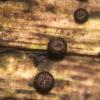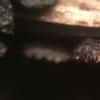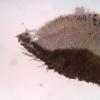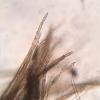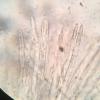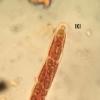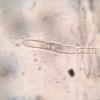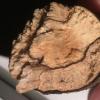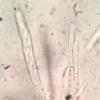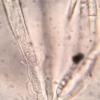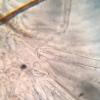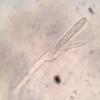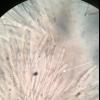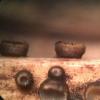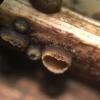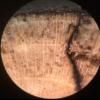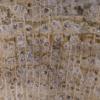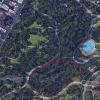
02-01-2026 17:43
MARICEL PATINOHi there, although I couldn't see the fruitbody, I

01-01-2026 18:35
Original loamy soil aside a artificial lake.The co

31-12-2025 19:27
Collected from loamy soil, at waterside (completel

30-12-2025 16:44
Pascal DucosBonjour,Une anamorphe rose stipitée, très nombre

30-12-2025 17:14
 Bernard CLESSE
Bernard CLESSE
Bonjour à toutes et tous,Pourriez-vous aider Albe
Trichopeziza ?
Ethan Crenson,
06-12-2018 07:35
Hello all,
These were found by my friend recently in Central Park in New York on a branch of what appears to be hardwood. At first they were closed but became cupulate when hydrated. They are sessile, about 1mm in diameter with brown hairs on the outside which become paler near the margin. The hymenium is tan or off-white. Asci 79-87 by 7-9µm, IKI-. Spores cylindrical, somewhat allantoid, hyaline, 13-17 by 3-3.5µm. I wasn't able to take a lot of photos or measurements of hairs or paraphyses etc., but I do still have access to the collection. I was thinking that the microscopic features are similar to T. perrotioides which I found in Zotto's drive. Any thoughts? Many thanks in advance for your comments.
Ethan
Hans-Otto Baral,
06-12-2018 08:21

Re : Trichopeziza ?
Great to see that this species occurs also in the US!
The inamyloid asci, allantoid spores, and warted paraphyses characterize it, and it seems incredible that it appears not to have been described in the past, at least since detailed microscopic illustrations are practiced.
What is not clear on your pics is the absence of croziers, perhaps you can verify this?
I call it T. perrotioides, see my folder.
Surely this is hardwood, and you could have a look on the pores if they are large and arranged in rings, or if striking radial rays are visible.
Would you please tell me the collection date? Then I can include this find in my manuscript on this species.
Zotto
The inamyloid asci, allantoid spores, and warted paraphyses characterize it, and it seems incredible that it appears not to have been described in the past, at least since detailed microscopic illustrations are practiced.
What is not clear on your pics is the absence of croziers, perhaps you can verify this?
I call it T. perrotioides, see my folder.
Surely this is hardwood, and you could have a look on the pores if they are large and arranged in rings, or if striking radial rays are visible.
Would you please tell me the collection date? Then I can include this find in my manuscript on this species.
Zotto
Ethan Crenson,
07-12-2018 05:48
Re : Trichopeziza ?
Zotto,
Thank you as always! I am uploading here a few photos of the features you have discussed. First the cross section of the wood. I am not certain if the photo contains the detail you are looking for. As for croziers, again, forgive my inexperience... I find them difficult to isolate, so I'm not certain I have shown the correct evidence in the photos. And finally, just a detail I noticed in my most recent mount, branching paraphyses. Also some clearer photos of the apothecia.
The collection was made Saturday December 1st in Central Park in New York City in an area close to the Ravine– approximately at the coordinates 40°47'43.0"N 73°57'20.3"W
Again thank you! I look forward to your comments.
Ethan
Hans-Otto Baral,
07-12-2018 10:04

Re : Trichopeziza ?
I see I did not completely read your first text, overlooking that you already arrived at perrotioides.
The branching of the paraphyses I remember also to have seen but it is of little value I think. Important is the granulation on the lanceolate upper part.
And yes, croziers are clearly absent.
Could you give me the name of your friend also, the collector is important to mention.
The wood is clearly an angiosperm. Acer would be a possibility, but this needs a higher magnification of the very good cross break and best also a tangential section viewed under the microscop at 100x.
Zoto
The branching of the paraphyses I remember also to have seen but it is of little value I think. Important is the granulation on the lanceolate upper part.
And yes, croziers are clearly absent.
Could you give me the name of your friend also, the collector is important to mention.
The wood is clearly an angiosperm. Acer would be a possibility, but this needs a higher magnification of the very good cross break and best also a tangential section viewed under the microscop at 100x.
Zoto
Ethan Crenson,
08-12-2018 20:32
Re : Trichopeziza ?
The collection was made by Vivien Tartter. I'll attempt to get better images of the wood later today.
Ethan
Ethan Crenson,
11-12-2018 22:42
Re : Trichopeziza ?
Zotto,
Hopefully this magnified photo of the wood in cross-section will contain enough clues to identify the type of wood the T. perrotioides was growing on. I don't have any experience identifying trees in this manner, so please bear with me if the photos are wrong.
I have prepared some of the collection for sequencing and perhaps I will get results. Are there other sequences of this taxon? One thing i find very curious is the wide range of colors in hymenium and hairs for the various collections in your folder. Perhaps it is not surprising that the collection that resembles ours macroscopically is the T. perrotioides "extraeuropean" from Australia. Or maybe that is surprising?
Regards,
Ethan
Hans-Otto Baral,
11-12-2018 22:49

Re : Trichopeziza ?
Oh, this is really good that you want to obtain DNA from it.
We have already 5 sequences, but all from Spain.
Regrettably we have none from Australia.
In fact, the colour strongly varies but the microscopy not.
The wood should be not difficult to identify. It reminds me of Robinia, is that possible? The large pores arranged in rings (like Quercus) are typical, als the "Thyllen" which ar shining matter in these pores.
Zotto
We have already 5 sequences, but all from Spain.
Regrettably we have none from Australia.
In fact, the colour strongly varies but the microscopy not.
The wood should be not difficult to identify. It reminds me of Robinia, is that possible? The large pores arranged in rings (like Quercus) are typical, als the "Thyllen" which ar shining matter in these pores.
Zotto
Hans-Otto Baral,
12-12-2018 16:37
Ethan Crenson,
12-12-2018 17:45
Re : Trichopeziza ?
Zotto,
Robinia is a possibility, but it could have also been Quercus. I am going to visit Central Park on Friday with my friend to try to find these Trichopeziza again and perhaps discover what tree they are on. The area of Central Park they came from is "The Ravine". It is in the northern part of the park south of Lasker Rink and West of "Fort Fish" (indicated by the red circle on the map I have uploaded here).
Ethan
Hans-Otto Baral,
12-12-2018 18:25

Re : Trichopeziza ?
Thanks! Quercus I woud exclude, e.g. because it has very broad radial rays, also characteristic arrangement of small summer pores.





